St Macreehy & the Grave-Eel
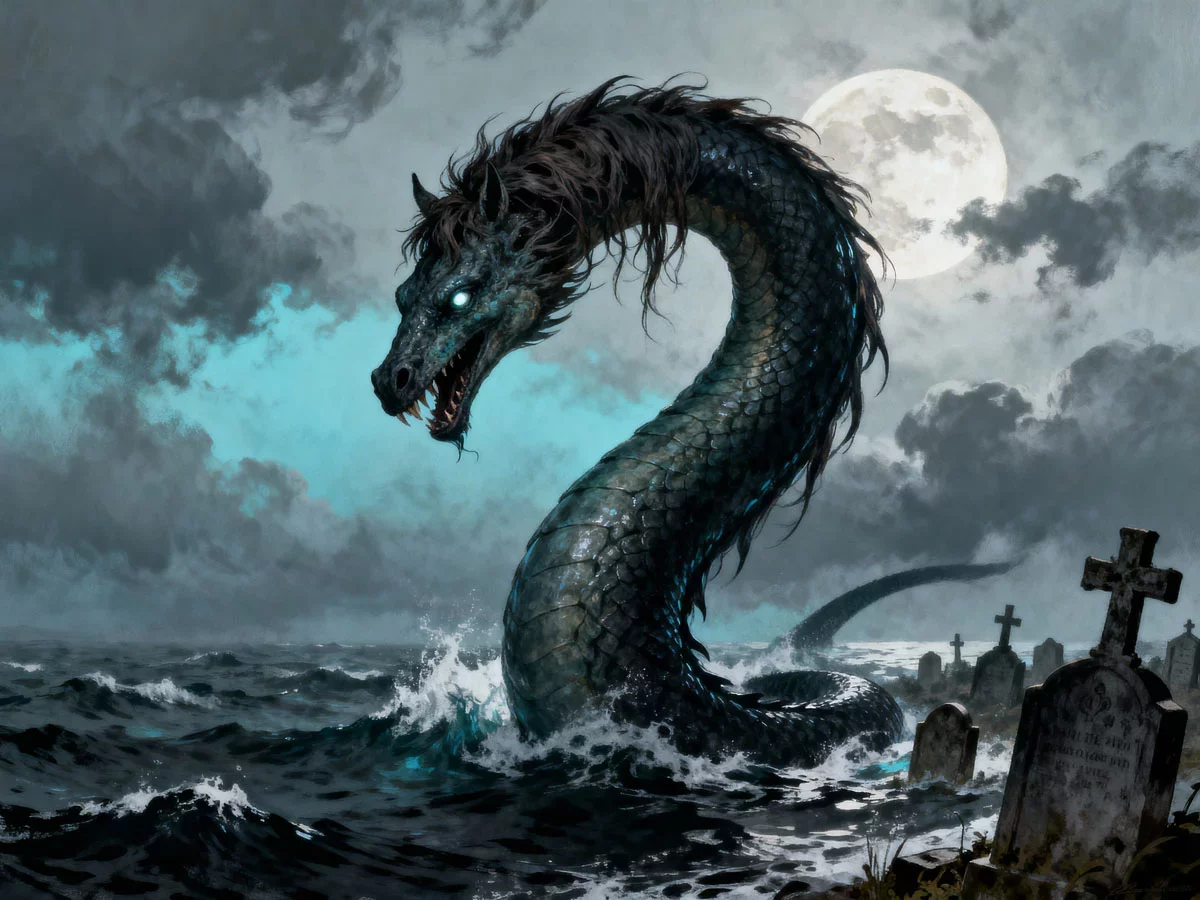
The Story: The Saint and the Grave-Eel
In the old times, a shadow fell upon the community around Liscannor. It wasn't the fear of famine or war, but something far more primal, a dread that clawed at the very soul of the people. Their dead could not rest. The ancient graveyard at Kilmacreehy, a sacred place of crumbling crosses nestled by the cold Atlantic shore, had become a hunting ground.
The monster was known as the an-mhír or the Grave-Eel. It was an abomination. By day, it lurked in the dark waters of the bay, but on the blackest nights, it would rise from the depths. It was a serpent of immense size, slick and black, with the horrifying addition of a coarse, horse-like mane running down its spine. Driven by an unholy hunger, it would slither from the waves and make its way to the consecrated ground of the graveyard. There, it would seek out the newest graves, using its immense strength to burrow through the soft earth and feast on the bodies of the recently buried.
It was a violation beyond imagining. The sanctity of death was broken, the promise of peaceful rest shattered. The community was paralysed by terror and grief, helpless to stop the creature that desecrated their loved ones. In their desperation, they turned to the one man whose power was not of this world: the holy man, Mac Creiche.
Saint Mac Creiche was a man forged from the piety and iron will of the early Irish saints. His faith was not a gentle, passive thing; it was a weapon, a shield, a burning light against the darkness. When the terrified villagers told him of the Grave-Eel, he understood immediately that this was not merely a beast, but a manifestation of evil, a demonic force preying on the flock.
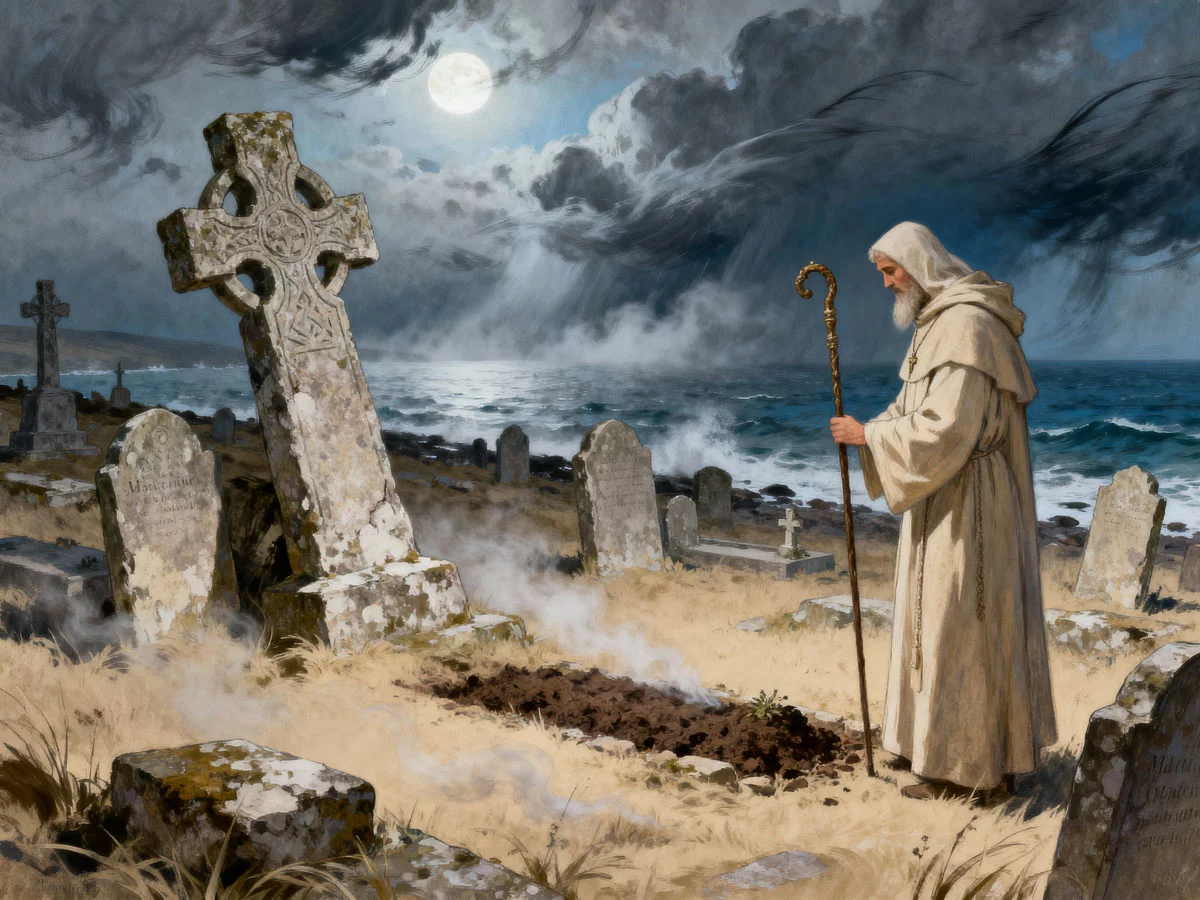
He agreed to face it. That evening, Mac Creiche went to the graveyard and stood vigil over the fresh grave of a recently deceased man. As the moon was devoured by clouds and the only sound was the hiss of the waves on the shore, the monster came. It rose from the water, a grotesque silhouette against the horizon, its horse-mane bristling in the salty air. It slithered towards the grave, its intentions clear.
But Mac Creiche stood in its path. He held no sword or spear, only his bishop's crozier, a symbol of his faith. The great eel lunged, but the saint was immovable, a rock of piety. He spoke words of power, a command that flowed not from his lips but from his very soul, an invocation of the divine authority he served. The demonic creature, which knew no fear of men or weapons, recoiled as if struck by lightning. The saint’s holiness was anathema to it.
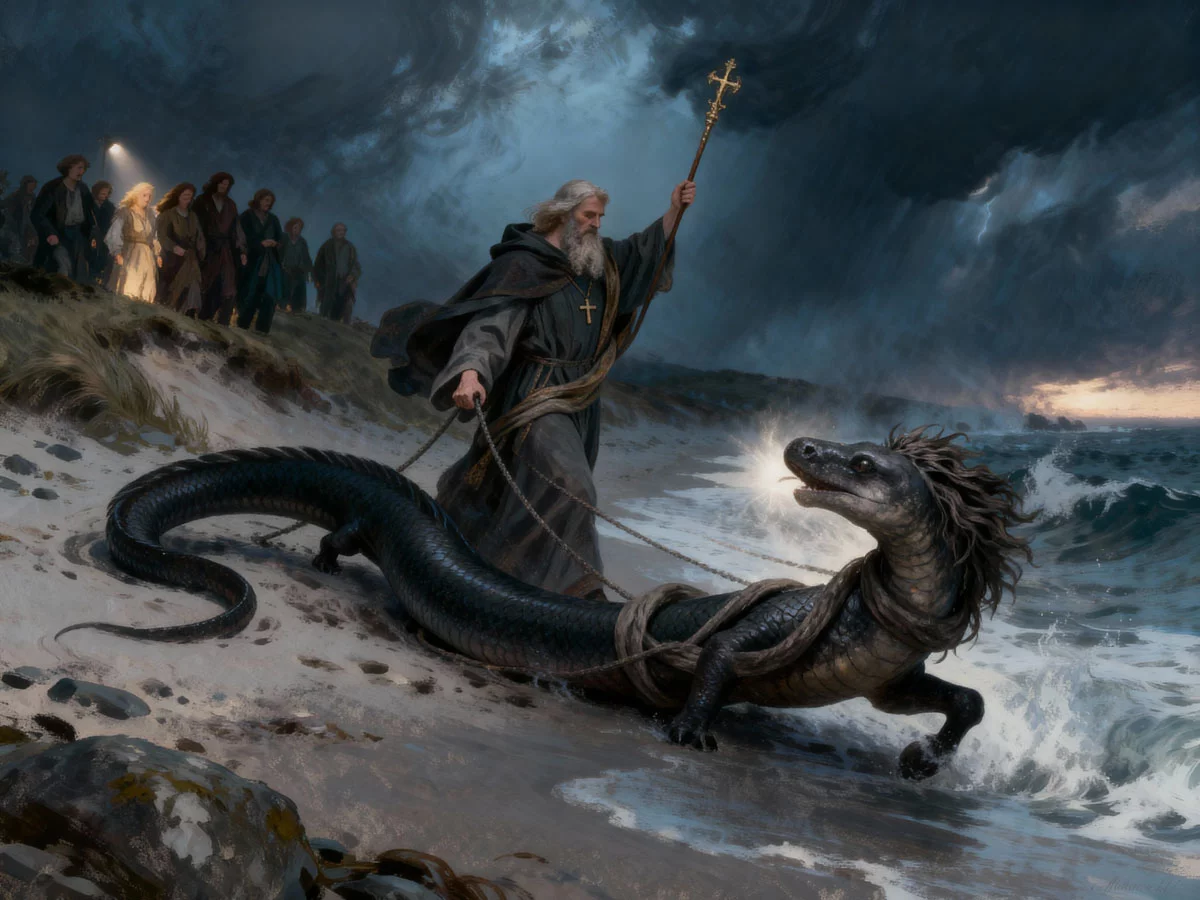
The battle was not one of flesh, but of spirit. Mac Creiche stepped forward and, in a display of supreme power, unwound his sacred stole and wrapped it around the monster's thick neck. The once-ferocious beast became instantly docile, leashed by the power of faith. The saint led the subdued serpent from the hallowed ground of the graveyard, down to the shoreline at a place they call Tráth na Leamhnach, the Strand of the Eel.
There, with the terrified villagers watching from the dunes, Saint Mac Creiche issued his final command. He banished the Grave-Eel to the deepest trenches of the Atlantic, forbidding it for all time from ever again touching the shores of Ireland or troubling the Christian dead. The creature slithered into the black water and vanished, never to be seen again. The graveyard of Kilmacreehy—the Church of Mac Creiche—was safe forever, consecrated not just by prayer, but by a victory over the forces of darkness.
Analysis: Taming the Primal Darkness
This legend is a potent example of a classic theme in Irish folklore: the triumph of Christian order over pagan chaos.
Archetypes in Conflict: The story presents a stark battle of symbols.
St. Mac Creiche (Christian Order): The saint is the champion of the new faith. He protects the community's most sacred rituals—chiefly, the proper burial of the dead, which is essential for the belief in bodily resurrection. He doesn't just kill the monster; he subdues and banishes it, demonstrating the superior, ordering power of his faith.
The Grave-Eel (Pagan Chaos): This is no ordinary animal. A giant, horse-maned sea serpent that eats corpses is a creature of pure nightmare, representing the most terrifying aspects of the pre-Christian world. It is a chthonic (underworld) force that violates the sanctity of the grave. Its defeat is a powerful allegory for Christianity conquering the dark, "demonic" beliefs and fears of the past.
A Foundational Myth: The primary function of this story is to establish the sanctity and power of a specific place (Kilmacreehy) by linking it directly to its patron saint. It answers the question, "Why is this place holy?" with a dramatic narrative: "Because this is where our saint faced down a demon and won." It turns a local church into the site of a legendary victory, reinforcing the faith of the community and their reverence for their local protector.
The Saint as Monster-Slayer: Mac Creiche's feat places him in a long tradition of Irish saints who prove their holiness by cleansing the land of monstrous creatures. The most famous is St. Patrick banishing the snakes (a metaphor for paganism), but many local saints have similar legends. These stories served as powerful sermons, proving that the Christian God and his saints held dominion over the terrifying, supernatural forces that the people once feared. The monster wasn't just defeated; it was brought under the authority of the Church, symbolized by the saint's stole acting as a leash.
In essence, the tale of the Grave-Eel is far more than a simple monster story. It’s a foundational charter for a Christian community, a psychological drama about overcoming the deepest human fears—the desecration of our dead—and a powerful piece of religious folklore that grounds divine power in the local landscape.
Related Heritage Sites
More Folklore
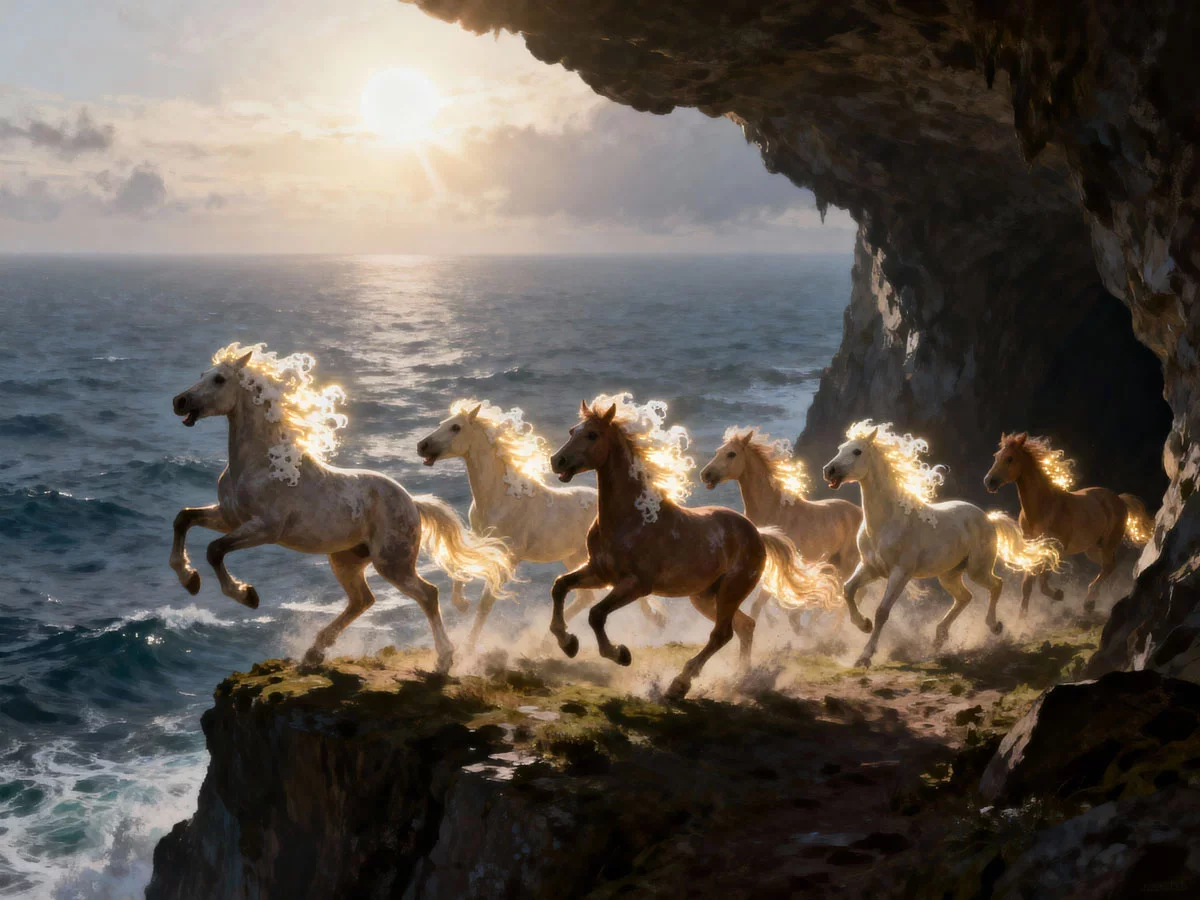
The Leap of the Foals (Aill na Searrach)
A group of the Tuatha Dé Danann, the old gods of Ireland, transformed into horses to hide from Christianity in a sea cave. After centuries, seven foals born in the dark emerged, were blinded by the sun, and tragically galloped off the cliff to their deaths.
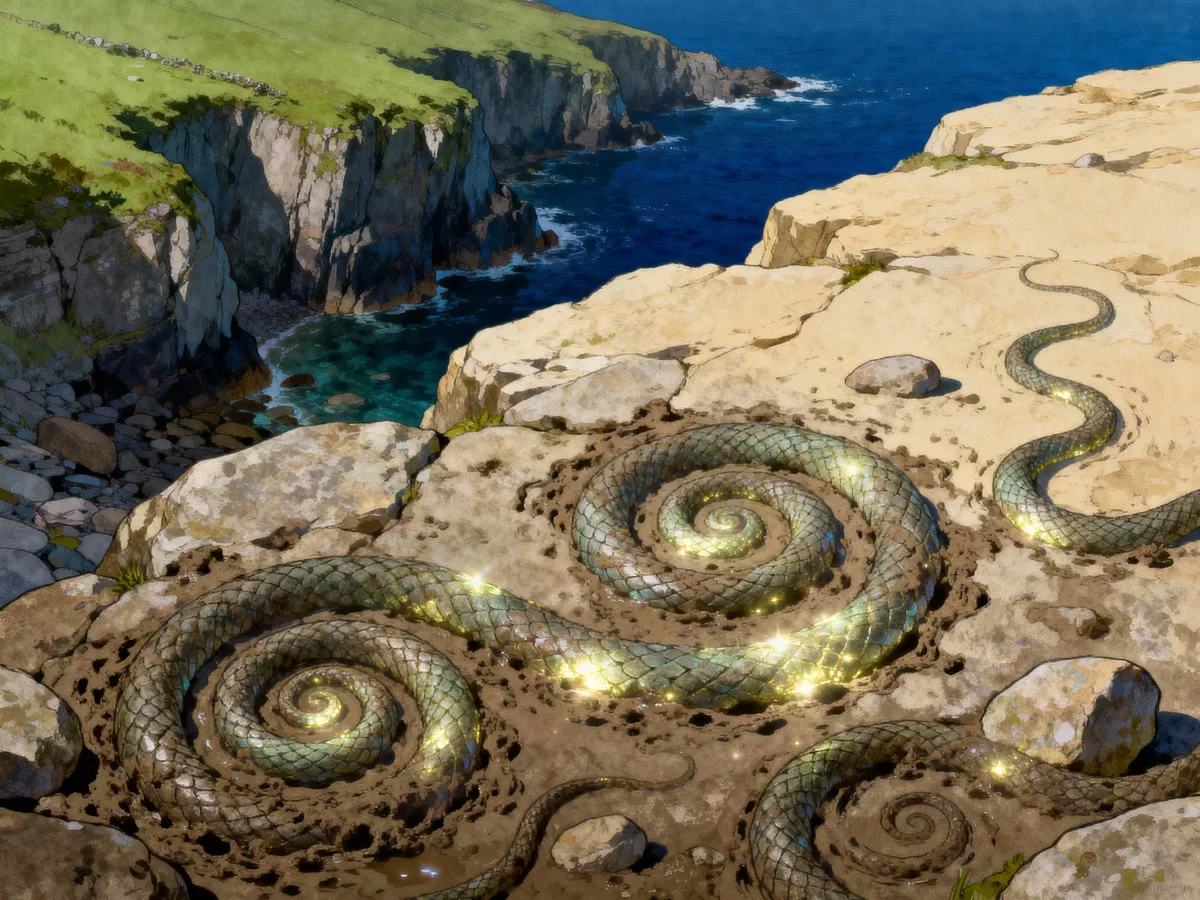
Snakestone Fossils
The spiral-shaped ammonite fossils found in Liscannor flagstone are explained by a legend where St. Patrick (or another powerful figure) turned all the snakes in Ireland to stone, freezing them in the rock forever.